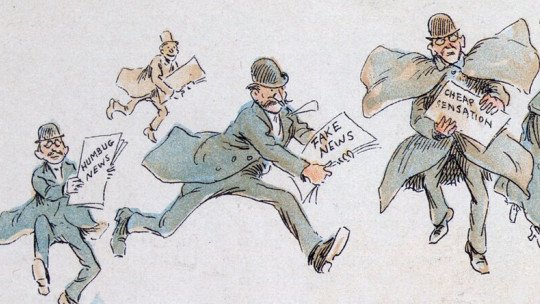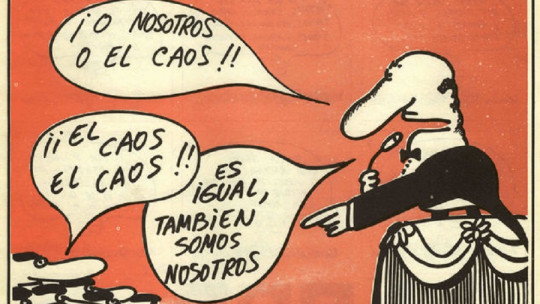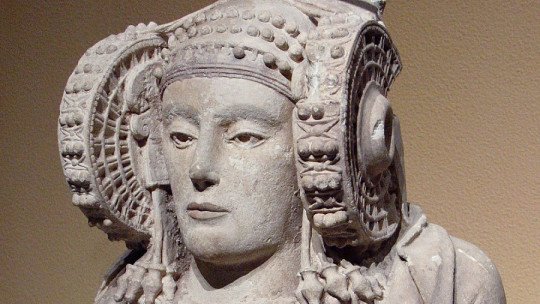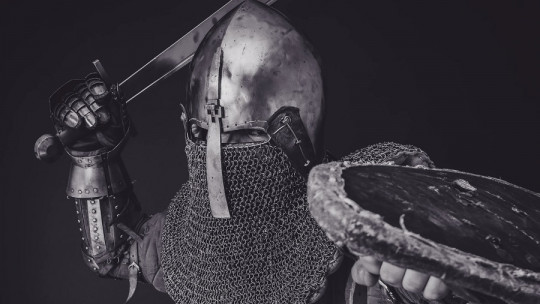What is known as fake news (which we could translate into Spanish as ‘false news’ or, rather, ‘falsified’) is older than it seems. In fact, Hoaxes have existed since human beings have existed, since they have served to mobilize certain sectors, legitimize powers or defend certain subjects from public opinion. And all this, long before the arrival of journalism. In today’s article we review some of the most notorious hoaxes in the history of humanity and delve into how and why they happened.
7 scandalous fake news in history
First of all, what exactly do we call fake new? Although the concept it refers to is very old, the term is, on the contrary, quite recent. Currently, it refers, in particular, to falsified news spread on the Internet, a medium that has contributed enormously to the dissemination of this type of hoax internationally.
However, and as we have already pointed out, fake news refers to any information that has been expressly falsified for a purpose, whether it is to promote popular excitement, defend someone from an accusation, get votes for a certain party… In general, fake news news are not spontaneous or innocent, and aim at a specific objective. Let’s see below 7 of the most scandalous fake news in history and what their consequences were.
1. Nero and the great fire of Rome
Not even the most remote antiquity is safe from fake news. In fact, today we cannot know how many historical facts that we take as true were born as hoaxes. Let us remember that, as they say, “History is written by the victors” and, too often, we only have a single source to know a specific fact.
The so-called “Great Fire of Rome” was one of these events that, even today, causes rivers of ink to flow among historians. Most agree that later historiography, eager to turn Nero into a monster in the eyes of history, attributed the crime to him and, in addition, put in his mouth the accusation (false, of course) that it was the Christians who had done it. authors of the fire. To make matters worse, history insists that the emperor burned the city “just” to get inspiration for a poem.
But what are the facts? There is evidence that Nero was not even in Rome when the fire occurred. On the other hand, when he heard the news, he moved rescue detachments to alleviate the damage and help the victims. And finally, the fire started in Trastevere, a place where the crowd lived in overcrowded conditions and with poor health and hygiene conditions, so it would not be unreasonable to think of an accidental fire.
Be that as it may, for posterity the figure of Nero has remained as the great architect of the fire of the year 64. Christian chronicles that wanted to nourish the “holiness” of the martyrs, falsely accused? Political enemies of Nero (who, remember, died violently) who wanted to drag his name through the mud? In reality, we will never know. But the hoax is there, and it has become part of the history books.
2. The great medieval hoax: Constantine’s donation
If there is a hoax that has transcended the centuries, it is the so-called “donation of Constantine.” This falsehood was maintained as true for no less than six hundred years, until, in the 15th century, the deception was discovered. Let’s put ourselves in situation. In the first centuries after the fall of the Roman Empire, Christianity (and therefore the papacy) struggled to consolidate its power. In the 9th century, a text is mentioned for the first time, the Donatio Constantini, in which the then Pope Hadrian I supported the reason for his power. According to the document, Emperor Constantine had ceded, in the 4th century, part of the western territories to the Pope, the seed of what would later become the Papal States.
Although throughout the Middle Ages there were serious doubts about the authenticity of the document, it was not until 1440 when the humanist Lorenzo Valla (1407-1457) discovered that the language used did not correspond to the time in which it had supposedly been written. . Thus it was discovered that the Donatio Constantini was a medieval forgery to justify the power of the papacy.
3. The chilling “blood libels”
In the last years of the Middle Ages, accusations began to circulate insistently against the European Jewish community in which the Hebrews were pointed out as the authors of several murders of Christian children. The supposed objective of the Jews would be, according to these libels, to ritualize their blood. These lies quickly circulated through society and caused real fear.
As often happens in cases of fake news that appeal to survival, neighbors began to distrust nearby Jewish families, as well as Jewish converts, and a real fever of anti-Semitism broke out. However, many of the accusations fell by their own weight, since they were radically contrary to Judaic precepts.
Especially famous was the case of Simón de Trento, a Christian boy who disappeared when he was only two years old and whose body was never found. The city’s Jewish community was soon accused of murder and ritual, and fifteen people were burned at the stake. Little Simon was canonized by the Catholic Church, although, already in the 20th century, his case was reviewed and his sainthood was revoked.
4. The “Great Moon Hoax”
The so-called “Great Moon Hoax” may be the first great hoax of modern journalism. In 1835, the New York newspaper New York Sun published curious news: they had discovered life on the Moon! As can be expected, the new one caused a real commotion. In fact, the New York Sun significantly increased its sales in the following weeks, as well as its number of subscribers. People were really fascinated with the articles that the media had been publishing about the supposed plants and animals that an astronomer, Andrew Grant (an absolutely invented character) had “discovered” through his telescope.
When the deception was discovered, The newspaper defended itself by saying that the six articles in question had been nothing more than “fictional stories” to entertain readers. The case ended in nothing and the New York Sun did not suffer retaliation, but the “Great Moon Hoax” went down in history as the first great fake news in the journalistic field.
5. The sinking of the Maine
Unfortunately, cases like the “Great Moon Hoax” laid the foundations for the so-called “yellow press,” which, little by little, expanded throughout the globe. One of the most famous cases occurred at the end of the 19th century. Two newspapers with significant circulation, the New York World and the New York Journal, dedicated themselves, during the 1890s, to slandering Spain and predisposing the American population against it. The goal? Getting the right breeding ground to unleash the long-awaited war, which, of course, ended up coming.
The climax (and which definitively triggered the conflict) was the publication of the news that the explosion of the American battleship Maine, anchored in the port of Havana, had been the result of a Spanish maneuver. The facts were never clear (the explosion could have been due to an internal problem with the boat); However, and shouting Remember the Maine, to Hell with Spain! The war was already underway.
5. Germany’s “body transformation factory”
Wars are a perfect breeding ground for the proliferation of fake news. We have already seen how the sinking of the Maine was used as an excuse to start the so-called Spanish-American War, better known in Spain as the “Cuban War.” A few years later, the First World War did not remain unscathed either.
In 1917, some English media (specifically, The Times and The Daily Mail) published terrifying stories in which supposed witnesses explained how a Kadaververwertungsanstalt, that is, a “body transformation factory,” worked.
According to these “witnesses,” the Germans used the corpses of their soldiers for various purposes, including feeding their pigs and extracting glycerin from the bodies. Although Germany protested and denied the facts, the fact is that the scandal was huge. Finally, China declared war on Germany… which was what, apparently, the English were looking for.
6. The false news of the “crucified child” by the Ukrainians
Already in a more recent period (specifically, during the Donbas War of 2014, a prelude to the current War in Ukraine) chilling news spread in the Russian media. According to the testimony of Halina Pyshnyak, an alleged Russian refugee, in Lenin Square in Sloviansk the Ukrainian forces had crucified a 3-year-old child.
However, doubts soon began to arise. Had no one else, apart from the woman, witnessed the act? Were there no recorded testimonies of what happened? It was something strange, since, in 2014, an event on the scale of a war received intense media attention. And, on the other hand, What was the “Lenin Square” that the witness cited? In reality, there was no square with that name in the city of the events…
The scandal was huge. Apparently, everything had been fake news that benefited pro-Russian propaganda. The hoax served, however, to carry out a series of studies on the speed with which fake news spreads today.
7. The Coronavirus pandemic
But if there is a recent event that has raised a multitude of fake news, it has been the Coronavirus pandemic of 2020. From how the disease originated to the supposed side effects of the vaccines; The four years that the pandemic lasted were a true factory of fake news that did nothing but spread fear among a population that was already quite terrified per se.
The fact that, during confinement, people were constantly connected to the networks did not help at all to contain fake news. For example, 5G technology was said to be one of the causes of the pandemic. The result was that some facilities were savagely attacked.
When vaccination began, fake news skyrocketed again. One of those that was quite “successful” was the one that maintained that, through vaccination, governments inserted a microchip with which they could constantly monitor the individual. And, despite the fact that the WHO made calls for calm at a global level, the hoaxes only grew, spurred by the always hot social networks.
Conclusions
Fake news is as old as humans. Through them, a certain sector of the population tries to manipulate society or specific groups, for varied purposes but that always come together in the same way: obtaining a benefit.
Whether it is the justification of a power (as happened with the papacy and the false Donation of Constantine), or the legitimation of a war (the battleship Maine, the chilling German corpse factory, the crucified child of Ukraine…) or the justification of senseless hatred (the cases of blood libels against Jews and converts), the fact is that fake news is highly dangerous.
Currently, with the proliferation of digital media and networks, it is increasingly easier to spread fake news, especially if it is supported by the increasingly chilling artificial intelligence. Perhaps there will come a time when this fake news will be so sophisticated that it will be impossible for us to discern truth from lies. In the meantime, however, it is better to be prepared and not believe everything that falls into our hands… for the good of humanity.









